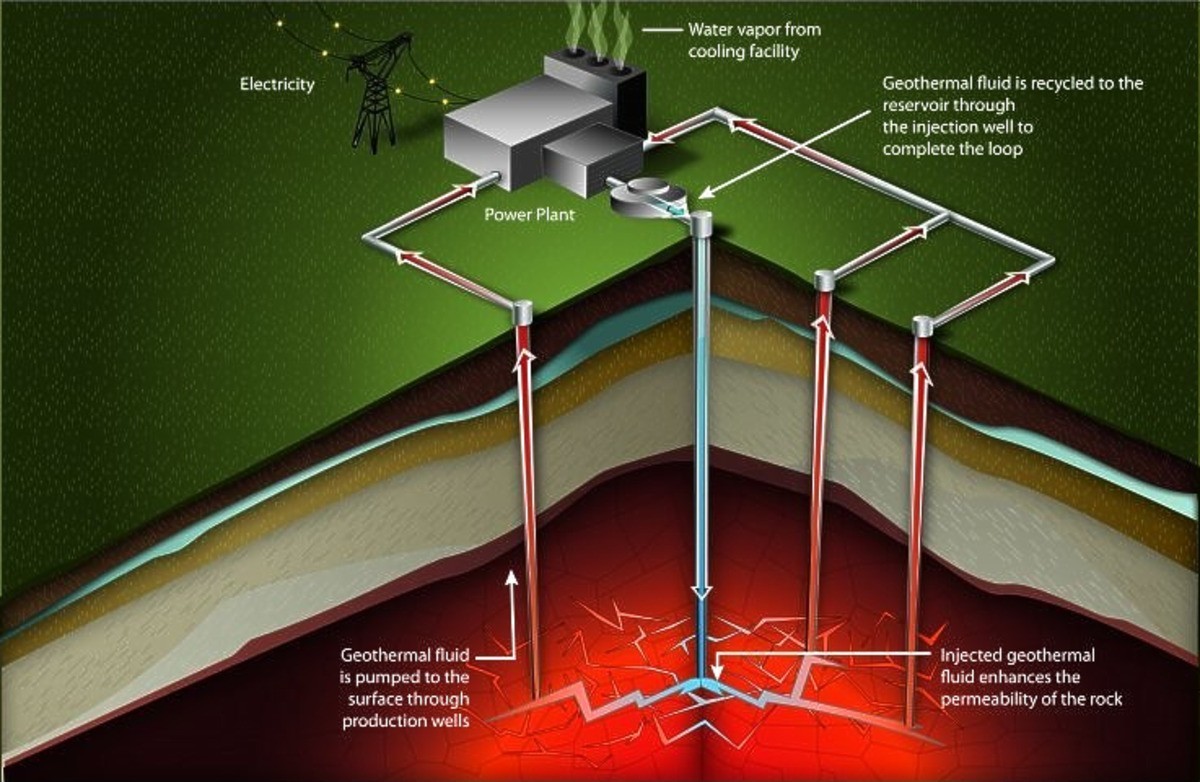Can Enhanced Geothermal Systems be used as grid-scale batteries? Anywhere!
D2Grids Project

The US Department of Energy aims to cut the cost of Enhanced Geothermal Systems (EGS) by 90% by 2035. Standard geothermal power comes from tapping existing hydrothermal reservoirs. But most places don’t have hot water reservoirs underground.
EGS pumps water down to reach hot rocks, heating the water to achieve the same purpose. Everywhere has hot rocks underground. Here, Stefan Ellerbeck, writing for the World Economic Forum, describes research that investigates how to store – not just extract – energy using EGS. This would lift the commercial value of the system, as it would also make money as a grid-scale battery, not just a baseload generator. Results show that electricity could be stored for many days (enough for daily grid balancing), and as efficiently as lithium-ion batteries. There are over five terawatts of heat resources in the US (that’s enough to meet the entire world’s energy needs) and the US DOE says capturing a small fraction of this could power 40 million American homes.
- Enhanced geothermal systems can tap into heat energy deep underground the Earth’s surface.
- New research says they could also be better than existing technologies like batteries for storing excess renewable energy from wind and solar power.
- Production of renewable energy is growing, but finding the best ways to store it will be critical to help the world decarbonise.
For thousands of years, people have used naturally occurring hot springs to cook food, heat their homes and even bathe in. This kind of energy is known as geothermal.
Electricity has been produced from geothermal sources for more than a century. The first geothermal power plants came online at the beginning of the 20th century. They use technology that drills underground and harnesses steam and hot water in the subsurface of the Earth. This heat then powers turbines that produce electricity.
Geothermal energy covers a significant amount of electricity demand in countries in tectonically active regions such as Iceland, New Zealand, Kenya and the Philippines. They take advantage of being able to drill wells straight into hydrothermal reservoirs that already exist.
Enhanced Geothermal Systems
Enhanced geothermal systems (EGS), on the other hand, are able to capture heat from areas that traditional geothermal energy cannot, where subsurface fluid and permeability are lacking. They drill deeper into the ground to create artificial thermal reservoirs...
News published on EnergyPost
paul.capgras[a]construction21.fr




